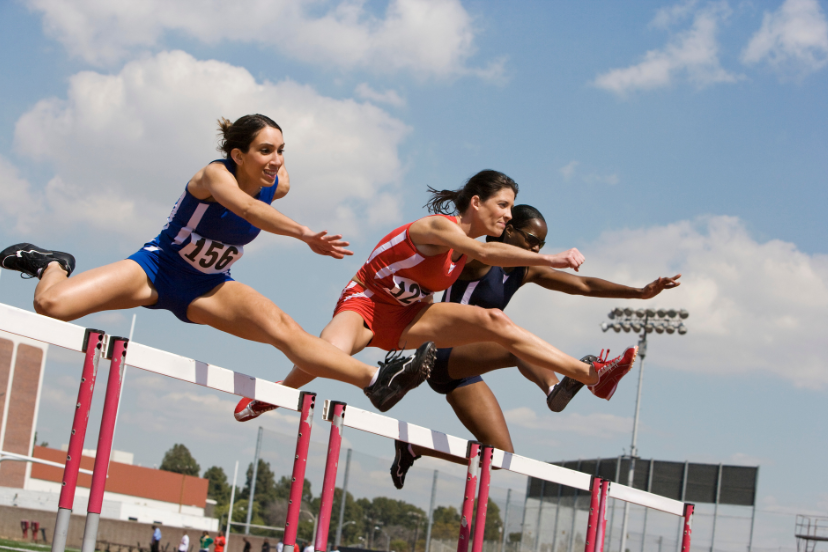Osteoporosis in Athletes: Unveiling the Silent Threat
Introduction
Osteoporosis in athletes? You bet. While athletes often embody health and vitality, they’re not immune to the silent threat of osteoporosis. In fact, the very activities that make them strong and agile can sometimes put them at risk for this bone-weakening condition. Let’s explore this topic further and uncover the mysteries surrounding osteoporosis in athletes.
Understanding Osteoporosis: A Sneaky Culprit
What’s osteoporosis all about? Simply put, it’s a condition marked by weak and brittle bones. Picture a house with a shaky foundation – one wrong move, and everything comes crashing down. In osteoporosis, bones become so fragile that even a minor bump or fall can lead to fractures.
How Does Osteoporosis Develop in Athletes?
But wait, aren’t athletes supposed to have strong bones? Absolutely! However, certain factors unique to the athletic world can predispose them to osteoporosis. Consider the intense training regimens and repetitive impact experienced by many athletes. While these activities can initially enhance bone density, over time, they may lead to overuse injuries and, paradoxically, bone loss.
The Role of Nutrition and Diet
Can diet impact bone health? Absolutely! Athletes, with their rigorous training schedules, often require higher levels of nutrients like calcium, vitamin D, and protein to support muscle and bone health. However, inadequate nutrition or disordered eating habits can wreak havoc on their skeletal system, paving the way for osteoporosis.
Gender and Osteoporosis Risk
Is osteoporosis gender-neutral? Not quite. While women are more susceptible to osteoporosis due to factors like hormonal changes during menopause, male athletes aren’t exempt. In fact, male athletes participating in sports that emphasize leanness or endurance may face a heightened risk of developing osteoporosis.
Impact of Sports on Bone Health
Can sports harm bone health? While physical activity is crucial for overall well-being, certain sports can exert excessive stress on the bones, leading to micro-damage and, eventually, osteoporosis. High-impact sports like gymnastics, basketball, and running, though beneficial in many ways, can accelerate bone loss if not balanced with proper rest and recovery.
Signs and Symptoms to Watch Out For
How do you know if you have osteoporosis? Unfortunately, osteoporosis is often referred to as a “silent disease” because it progresses stealthily without any noticeable symptoms until a fracture occurs. However, some warning signs include persistent back pain, loss of height, and easily fractured bones.
Prevention Strategies for Athletes
Can osteoporosis be prevented in athletes? Absolutely! While athletes face unique challenges when it comes to bone health, there are several proactive steps they can take to minimize their risk:
Balanced Nutrition: Fuel your body with a well-rounded diet rich in calcium, vitamin D, and protein to support bone remodeling and repair.
Cross-Training: Mix up your workout routine with low-impact activities like swimming or cycling to give your bones a break from repetitive stress.
Strength Training: Incorporate weight-bearing exercises into your regimen to build and maintain bone density.
Proper Rest and Recovery: Listen to your body and prioritize rest days to allow for adequate healing and regeneration.
Regular Bone Density Testing: Get regular bone density screenings to monitor skeletal health and catch any issues early on.
Avoid Smoking and Excessive Alcohol: Both can wreak havoc on bone health, so steer clear to protect your bones.
FAQs About Osteoporosis in Athletes
- Can athletes really get osteoporosis? Yes, athletes, despite their active lifestyles, can still develop osteoporosis, especially if they engage in high-impact sports without proper nutrition and rest.
- What sports put athletes at the highest risk of osteoporosis? Sports involving repetitive impact and stress on the bones, such as gymnastics, dance, and long-distance running, increase the risk.
- Are male athletes at risk of osteoporosis too? Absolutely. Male athletes, particularly those in sports emphasizing leanness or endurance, are at risk.
- How can athletes prevent osteoporosis? By maintaining a balanced diet rich in bone-healthy nutrients, incorporating strength training, and prioritizing rest and recovery.
- At what age should athletes start worrying about osteoporosis? It’s never too early to start thinking about bone health. Athletes of all ages should take proactive steps, especially as they approach middle age when bone density naturally declines.
- Can osteoporosis be reversed in athletes? While it cannot be fully reversed, lifestyle modifications such as proper nutrition and exercise can help slow down its progression and reduce fracture risk.
In Conclusion
Osteoporosis in athletes is a real and often overlooked issue. While athletes may seem invincible on the field or court, their bones can still succumb to this silent disease. By understanding the risk factors and implementing preventive measures, athletes can safeguard their bone health and continue to excel in their sport. So, let’s prioritize bone health and ensure a strong foundation for a lifetime of athletic achievement!




